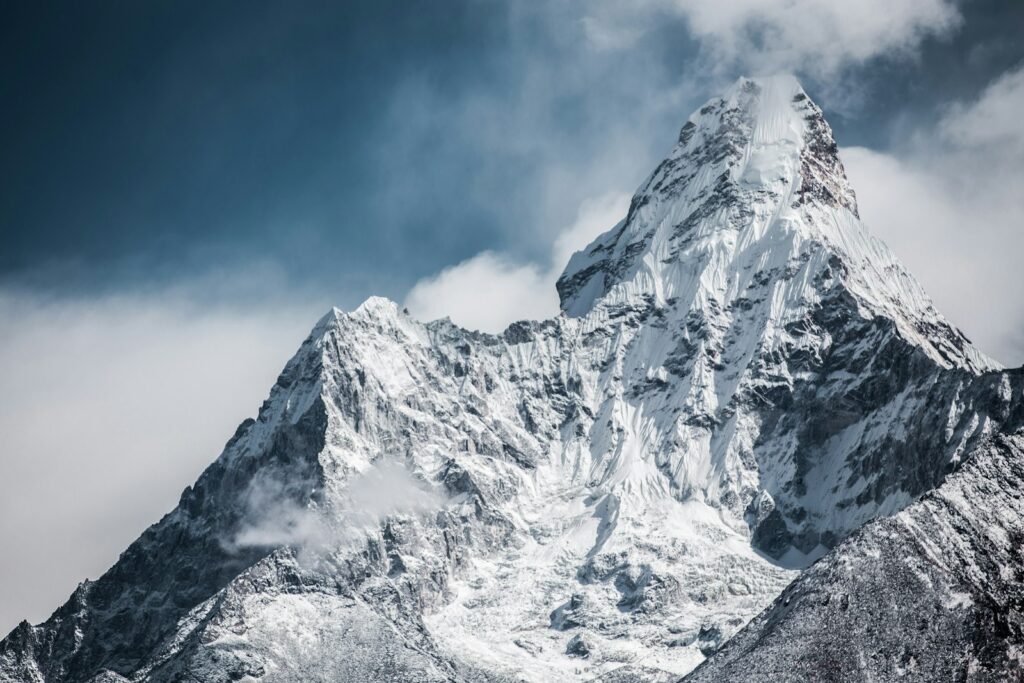Langtang Valley Trek and the Everest Base Camp Trek are both admiration-inspiring Himalayan adventures, each with its own unique appeal. Let’s dive into the details of these remarkable treks.
Langtang Valley Trek:
Duration: approximately 6 days.
Cost: Around ₹6,000.
Starting Point: Kathmandu.
Peak Heights: The Langtang Valley opens up to peaks reaching 7,000+ meters.
Crowd :Unlike the heavily crowded Annapurna Base Camp and Annapurna Circuit, Langtang sees far fewer pedestrians each time.
Post-Earthquake Recovery Although the region was significantly affected by an earthquake, it has recovered remarkably well and now welcomes pedestrians.
Highlight: Staying at Kyanjin Gompa is a memorable part of this journey.
Day 1: Depart from Kathmandu to Syabrubesi( 1420 m). Motorcars leave beforehand in the morning from Kathmandu’s Machhapokhari machine stage. Anticipate a rickety lift, and make sure to gain your public demesne permit at Dhunche before reaching Syabrubesi.
Day 2 :Trek from Syabrubesi to Bamboo( 1975 m) and also to Gumnachowk( 2700 m). The trail follows the Langtang Khola swash, offering tardy walks through the public demesne. Be cautious about altitude sickness if you cover more than a kilometer in altitude on the same day. Gumnachowk, a serene riverside spot, awaits with breathtaking views.
Everest Base Camp Trek
Duration: generally around 12–14 days. Starting Point: Lukla( after a scenic flight from Kathmandu).
Altitude Challenge: Reaching an altitude of 5,364 m ( 17,598 ft) at Everest Base Camp trek requires adaptation.
High Season Crowds
October, November, and April witnessed a swell of pedestrians. Kala Patthar offers unmatched panoramic views. Everest Base Camp
A major position where you’ll stand face-to-face with potent Mt. Everest, the world’s loftiest peak. Both treks pledge indelible gestures amidst the admiration-inspiring background of the Nepalese Himalayas. Whether you choose the off-beaten path of Langtang or the iconic Everest Base Camp, you’ll be immersed in mountain majesty.
Langtang Valley Trek Accommodations:
Teahouses (tea lodges) Teahouses are the most common and accessible accommodation option along the Langtang Valley trail. These rustic lodges offer introductory installations such as beds, robes, and collaborative dining areas. Anticipate participating in bathrooms and simple reflections. Teahouses are an excellent way to connect with fellow pedestrians and experience original hospitality.
Guesthouses
Some townlets in the Langtang region have guesthouses. Guesthouses provide private apartments with attached or participating bathrooms. While they are more comfortable than teahouses, they still maintain a cozy, mountainous vibe. Homestays: For a more authentic experience, consider staying in an original sleepover.
Homestays
Allow you to immerse yourself in the culture and life of the Langtang communities. You’ll stay with original families, share memories, and learn about their traditions.
Everest Base Camp Trek Accommodations:
Teahouses (Lodges): Teahouses are abundant along the Everest Base Camp trail.
They offer similar amenities as in Langtang—beds, blankets, and communal dining areas.
Due to higher demand, teahouses in the Everest region can get crowded during peak seasons.
Hot showers and charging facilities are often available for a fee.
Luxury Lodges
In recent times, some luxury lodges have sprung up along the Everest trail.
These lodges offer more comfortable apartments, private bathrooms, and better dining options.
Anticipate amenities like Wi-Fi, hot showers, and cozy couches.
Luxury lodges are expensive but offer a touch of comfort amidst the rugged terrain.
Camping
Still, you can bring your own roof and camp at designated spots if you prefer camping.
Camping allows for inflexibility and solitude, but it also requires carrying fresh gear.
Make sure to check the availability of camping spots and permits in advance.
Flash back to the fact that accommodation options can vary gbasedon the specific route, season, and particular preferences. Both journeys offer a range of choices, allowing you to conform your experience to your relish.
Altitude and Acclimatization; Langtang and Everest
Altitude plays a significant part in the Langtang Valley Trek, as the trail ascends through varying elevations. Starting from Syabrubesi at around 1,460 measures, pedestrians gradually make their way up to Kyanjin Gompa at roughly 3,870 measures.
This gradual ascent allows a more manageable transition to an advanced mound, reducing the threat of altitude-related issues. Nonetheless, it’s essential to be aware of implicit altitude challenges. Acceptable adaptation breaks are erected in the diary, furnishing pedestrians with pivotal rest days to allow their bodies to acclimatize to the reduced oxygen situation.
These breaks help alleviate altitude sickness and offer openings to explore original culture and natural beauty. Given the substantial elevation gains involved, altitude is a vital factor in the Everest Base Camp Trek. The journey commences at Lukla, roughly 2,840 measures, and gradational ascends to Everest Base Camp at around 5,364 measures. Similar rapid-fire elevation changes require a deliberate adaptation strategy.
Pedestrians spend several nights at intermediate points like Namche Bazaar, Dingboche, and Gorak Shep, allowing their bodies to acclimate to the reduced oxygen situation. This strategic adaptation minimizes the threat of altitude-related affections, creating a safer and more pleasurable trekking experience.
Also, side passages to high points like Kala Patthar further aid in adaptation while offering stirring views of the Everest region.
Jenn Drummond: Unbreakable Journey to Accountability(Opens in a new browser tab)
In conclusion:
The Langtang Valley Trek and the Everest Base Camp Trek offer extraordinary experiences amidst the awe-inspiring backdrop of the Nepalese Himalayas. While they share similarities in their breathtaking scenery and cultural encounters, they each possess unique charms and challenges.
